Today’s Current Affairs: 9th July 2025 for UPSC IAS exams, State PSC exams, SSC CGL, State SSC, RRB, Railways, Banking Exam & IBPS, etc
Table of Contents
Eklavya Model Residential Schools:
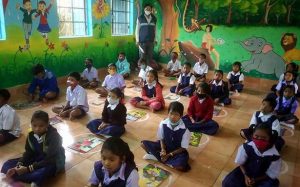
Nearly 600 students from Eklavya Model Residential Schools (EMRS) across 12 states have cleared top entrance examinations for undergraduate studies in medicine and engineering this year, according to the Tribal Affairs Ministry’s performance assessment.
- It is a flagship intervention of the Ministry of Tribal Affairs, Government of India, to provide quality residential education to Scheduled Tribes students from Class 6th to 12th in remote areas to enable them to access the best opportunities in education and to bring them at par with the general population.
- The programme has been in operation since 1998 and was revamped during the year 2018-19 to expand the geographical outreach and enhance the quality of facilities.
- EMRSs will be set up in every block with more than 50% ST population and at least 20,000 tribal persons.
- Accordingly, the Ministry has set the target to set up 728 EMRSs across the country by the year 2026.
- The National Education Society for Tribal Students (NESTS), an autonomous organization, has been set up under the Ministry of Tribal Affairs to establish and manage EMRS across the country.
- EMRSs are co-educational residential schools from Class VI to XII.
- Eklavya schools will be on par with Navodaya Vidyalayas and will have special facilities for preserving local art and culture besides providing training in sports and skill development.
- The school infrastructure will include classroom, administrative block, hostels for boys and girls, playground, accommodation for teaching and non-teaching staff, Labs etc. facilities catering to the need of academic education as well as extracurricular activities.
- CBSE curriculum is followed in these schools, and education is completely free.
- Each school has a capacity of 480 students with an equal number of seats for boys and girls.
- Non-ST students can be admitted in these schools on seats up to 10% of the total seats.
- Reservation of 20% of seats under sports quota for deserving ST students who have excelled in the field of sports.
National Maritime Domain Awareness (NMDA) Project:
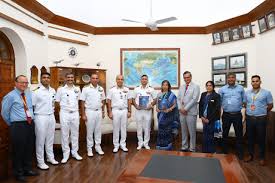
The Indian Navy recently signed a contract with M/s Bharat Electronics Limited (BEL), Bengaluru for the implementation of National Maritime Domain Awareness (NMDA) Project.
- National Maritime Domain Awareness (NMDA) Project is aimed at strengthening maritime and coastal security.
- The project will bring in an integrated approach to data collation, analysis, and information sharing amongst the various maritime stakeholders.
- The project entails upgradation of the existing National Command, Control, Communication, and Intelligence (NC3I) Network to the NMDA Network along with the incorporation of AI-enabled software for smarter surveillance and decision-making.
- As part of the project, the existing Information Management and Analysis Centre (IMAC) at Gurugram, which is the nodal centre of the NC3I Network, will also be upgraded into a Multi-Agency NMDA Centre.
- This upgraded centre will host personnel from 15 agencies spanning seven key ministries — including Defence, Shipping, Petroleum, Fisheries, and others — to ensure seamless coordination and information sharing.
- The NMDA project will link various maritime agencies, coastal states, and union territories for a unified operational picture of India’s vast coastline and surrounding seas.
- It will also integrate data from sectors such as commercial shipping and fisheries, improving response capabilities to maritime threats, search-and-rescue missions, and environmental incidents.
- The project, set to be executed on a turnkey basis, will be administered by the Indian Navy.
- Bharat Electronics Limited (BEL) will serve as the lead integrator, providing state-of-the-art hardware and AI-enabled software solutions.
Erasmus+ Programme:
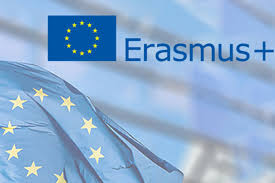
A total of 101 Indian students, including 50 women, recently received the Erasmus+ scholarship for master’s programs in Europe.
- The Erasmus+ programme, launched in 1987, is the European Union’s flagship initiative supporting international academic mobility.
- The scholarship allows students to study at two or more European universities and earn joint, double, or multiple degrees.
- It covers tuition fees, travel costs, and living expenses.
- It will support young people, students, and adults in education, training, traineeships, or volunteering abroad, enabling them to expand their skills and competence.
- Erasmus+ also offers educational institutions and organisations opportunities for European cooperation with their international partners.
- In addition to offering grants, Erasmus+ also supports teaching, research, networking and policy debate on EU topics. The sports chapter promotes grassroots activities in sports.
- The objectives of the Erasmus+ programme are to
- support people’s educational, professional, and personal development in the fields of education, training, youth, and sport in Europe and the partner countries;
- promote growth, employment, social cohesion, and innovation;
strengthen European identity and active citizenship.
Great Hornbill:
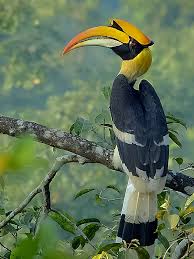
The Malamuzhakki Vezhambal (Great Hornbill), Kerala’s State bird, was spotted in the coastal belt of Kakkampara, near Ezhimala in Kannur, an area far from its usual forested habitats.
- The great hornbill, also known as the concave-casqued hornbill, great Indian hornbill, or great pied hornbill, is a large bird and one of the larger members of the hornbill family.
- Scientific Name: Buceros bicornis
- It is found in the Indian subcontinent and Southeast Asia.
- In the subcontinent they are found in a few forest areas in the Western Ghats and in the forests along the Himalayas.
- Great hornbills reside in wet evergreen and deciduous old-growth forests at elevations of 600 to 2000 meters (1968.5 to 6561 feet). For nesting, they prefer trees that tower above the canopy level.
- They are fairly large, ranging from 95 to 120 cm in length and featuring a wingspan of 151 to 178 cm. On average, they weigh 3 kg.
- They are vividly colored and easily recognizable. The body, head, and wings are primarily black; the abdomen and neck are white. The tail is white and is crossed by a subterminal black band.
- A preen gland near the tail secretes tinted oil, which is spread across the feathers by the bird during grooming. This may give the bill, neck, casque, and tail and wing feathers coloration varying from yellow to red.
- The most recognizable feature of hornbills is the casque, which is a hollow structure located on top of the bill. It may be used by males to fight with other males and attract females.
- Like many other hornbills, these birds have prominent eyelashes.
- Males and females are similar except that the irises of males are red while those of females are white, and males have slightly larger bills and casques.
- It is predominantly frugivorous, but is an opportunist and will prey on small mammals, reptiles, and birds.
- Conservation Status: IUCN Red List: Vulnerable.
Vera C Rubin Observatory:

The Vera C Rubin Observatory in Chile has released its first breathtaking images, showcasing the power of its 3,200-megapixel digital camera—the largest ever built.
- Vera C Rubin Observatory is located 8,684 feet above sea level atop the Cerro Pachónmountain in the Chilean Andes.
- Cerro Pachón was selected as the site for Rubin Observatory because it’s an excellent place to conduct high-quality astronomical and astrophysical science.
- It is named after American astronomer Vera C Rubin, who provided evidence about dark matter for the first time in the 1970s
- It is partnered with the S. Department of Energy (DOE) and National Science Foundation (NSF).
- This observatory will provide comprehensive images of the night sky unlike anything astronomers have seen before.
- It will constantly scan the sky of the southern hemisphere for 10 years, gathering 20 terabytes of astronomical data each night.
- The observatory’s software will automatically compare new images with older ones and generate an estimated 10 million alerts per night for each change detected in the sky.
- The centrepiece of the observatory is the Simonyi Survey Telescope
FATF’s Comprehensive Update on Terrorist Financing Risks 2025:
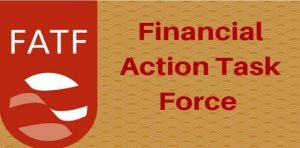
The FATF’s 2025 report highlights how accused in major terror incidents in India—including the Gorakhnath attack and Pulwama bombing—used online payment platforms, VPNs, and e-commerce sites to fund and execute terrorism.
FATF’s Comprehensive Update on Terrorist Financing Risks 2025:
- Digital Tools in Terror Financing: Increasing use of e-commerce, crypto assets, VPNs, and fintech platforms to fund terrorist activities anonymously. E.g.: Gorakhnath attacker used PayPal and VPNs to fund ISIL-linked operations.
- Terrorist Abuse of E-Commerce (EPOMs): Terrorists exploit e-commerce platforms (like Amazon) to purchase materials covertly. E.g.: Pulwama bomber bought aluminium powder via Amazon.
- Crypto & Anonymity Tools: Growth in unregulated crypto markets and mixer services pose serious tracking challenges for investigators.
- Third-Party Payment Gateways: Online intermediaries are used to route funds between foreign sources and terrorists, complicating traceability.
- Lone Actor Threats Rising: Radicalised individuals act independently, often funded via online crowdfunding, social media, or gaming platforms.
- Trade-Based Terror Financing: Use of under/over-invoicing via online storefronts to launder funds and move value undetected.
- Geographic Spread: South Asia, West Africa, Sahel, and Middle East remain high-risk regions; India cited as a critical case study.
- Global Weak Oversight: Many jurisdictions lack sufficient KYC, AML, and CTF frameworks for digital platforms.
Kerala Semicircular Classroom:
Inspired by the Malayalam film Sthanarthi Sreekuttan, several Kerala schools have adopted a semicircular classroom seating arrangement, breaking away from the traditional row-based system. This shift aims to eliminate student hierarchies and promote inclusion and engagement in learning environments. A semicircular layout places students in an arc, facing the teacher at the center. It breaks the front-bencher vs back-bencher division, fostering equal participation. Originally suggested under the District Primary Education Programme (1994), it is now revived through public influence.
Grand Collar of the National Order of the Southern Cross:
Brazil has conferred its highest civilian honour — Grand Collar of the National Order of the Southern Cross — on Prime Minister of India during his official visit.Brazil’s highest civilian award, exclusively given to foreign dignitaries for exceptional service to Brazil. Awarded by:Conferred by the President of Brazil, who serves as the ex officio Grand Master of the Order.
Coartem Baby : First Malaria Drug for Infants
Switzerland has approved Coartem Baby, the first-ever malaria treatment for newborns and infants, developed by Novartis. Eight African nations are expected to follow with fast-track approvals.A new pediatric formulation of artemether-lumefantrine, named Coartem Baby, specifically designed for infants weighing 2–5 kg (newborns to under 6 months). Developed by Novartis, in collaboration with Medicines for Malaria Venture (MMV) and other global health partners.Objective is to close the treatment gap for malaria in the most vulnerable age group — newborns and very young infants, previously excluded from clinical trials and vaccination coverage.
Advanced Towed Artillery Gun System:
The Indian Army is set to induct its first regiment of indigenous Advanced Towed Artillery Gun System (ATAGS) after successful trials, marking a major leap in artillery modernization.ATAGS is a 155mm/52 calibre long-range towed artillery gun system designed for precision firepower. Developed by defence Research and Development Organisation (DRDO) in collaboration with Tata Advanced Systems Ltd and Bharat Forge Ltd under Make in India.It is part of a mission to replace ageing artillery in the Indian Army with modern, high-performance guns.
Union Minister Pradhan Inaugurates Agritech Innovation Hub in Meerut:
Union Minister for Education, Shri Dharmendra Pradhan, along with Minister of State for Education and Skill Development, Shri Jayant Chaudhary, inaugurated the Uttar Pradesh Agritech Innovation Hub and the Agritech Startup and Technology Showcase at Sardar Vallabhbhai Patel University of Agriculture and Technology (SVPUAT), Meerut, on July 9, 2025. This initiative is envisioned as a collaborative platform that connects farmers, technologists, startups, and academia, aiming to deliver sustainable, region-specific agricultural solutions.
PM Modi Sets $20 Billion Trade Target with Brazil by 2030:
During a state visit to Brazil on July 9, 2025, Prime Minister Narendra Modi set a bold goal to increase India–Brazil bilateral trade to $20 billion by 2030, up from the current $12.2 billion. Speaking at a Joint Press Conference alongside Brazilian President Luiz Inácio Lula da Silva in Brasilia, PM Modi outlined a roadmap to deepen economic cooperation and strategic ties between the two major Global South economies.PM Modi emphasized India’s intent to expand the Mercosur preferential trade agreement. Mercosur, a regional trade bloc comprising Brazil, Argentina, Paraguay, and Uruguay, currently has limited coverage with India. Modi stressed the need to include more products and enhance market access for Indian exporters.
ISRO Successfully Conducts Hot Tests of Gaganyaan Propulsion System:
the Indian Space Research Organisation (ISRO) successfully carried out two hot tests of the Gaganyaan Service Module Propulsion System (SMPS) at its Propulsion Complex in Mahendragiri, Tamil Nadu. These tests mark a vital progression toward the realization of India’s first crewed space mission, the Gaganyaan Programme. The tests were publicly disclosed by ISRO on July 8, highlighting the space agency’s technical preparedness and the operational integrity of the propulsion module.
Panna Tiger Reserve : In News
Vatsala, considered to be Asia’s oldest elephant, died recently at the age of more than 100 years at the Panna Tiger Reserve in Madhya Pradesh. It is located in the Vindhyan mountain range in the northern part of Madhya Pradesh. Standing over an area of 542 sq.km., it is the only tiger reserve in the entire Bundelkhand region. It falls in biogeographic zones of the Deccan Peninsula and the Biotic Province of the Central highlands. It was declared a Project Tiger Reserve by the Government of India in 1994.
Sabih Khan Appointed as Apple’s Next Chief Operating Officer (COO):
Tech giant Apple Inc. announced a key leadership transition: Sabih Khan, its long-serving Senior Vice President of Operations, has been appointed the company’s Chief Operating Officer (COO). He succeeds Jeff Williams, who is stepping down this month and will retire later in the year.This move marks a significant moment for Apple, coming at a time when the company is navigating complex global supply chain challenges, technological transitions, and mounting geopolitical and regulatory pressures
Kasaragod Wins Kerala Fisheries Department’s Excellence Award 2025:
The Kerala Fisheries Department has conferred the Fisheries Department Excellence Award 2025 on Kasaragod district, acknowledging its outstanding performance under the Popular Fish Farming Project. This prestigious honour highlights Kasaragod’s leadership in sustainable and innovative practices in aquaculture and its consistent efforts at the grassroots level.Kasaragod was adjudged the best district in the State for its effective implementation of fisheries development projects. The award is part of the annual State Farmer Awards, instituted by the department to honour excellence in the fisheries and aquaculture sectors across Kerala.




